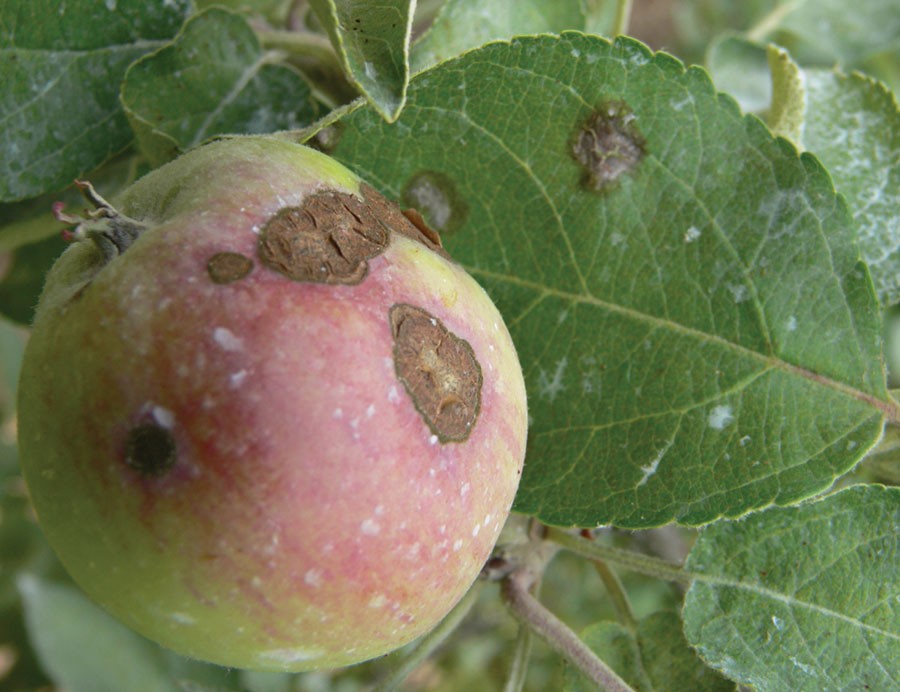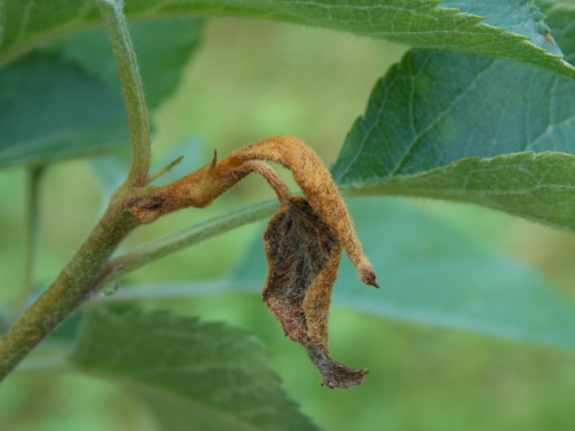I’d be lying if I said there was a short list of diseases and insects that could attack and harm your apple tree. The worst part is that apple trees are prone to pests — birds, mice, and insects alike all love a good apple as much as we do. So, while this post covers a few diseases, it is by far inclusive. The ebook I’m currently in the process of writing with the assistance of my father-in-law, Russell Beiersdorfer, retired horticultural expert and manager of Beiersdorfer Orchard will have far more. Until then, here are the primary ones I’ve seen this year in training at the orchard.
A few basics
There are a few basic things we city dwellers can do that will help keep pests to a minimum. My favourite practical advice comes from the Farmer’s Almanac .
- Keep deer at bay with repellents or fencing; deter mice and rabbits with wire-mesh cylinders around the base of the tree new trees.
- Sprays may be needed for insects, although you can trap apple maggots directly by hanging one or two round, red softball-size balls that has been coated with sticky “Tangle-Trap,” from a branch in June through the summer. Reapply the sticky goo a time or two, as necessary.
- Just like all other plants, it is necessary to fend off diseases by raking leaves, burying them beneath mulch, or grinding them with a lawn mower at season’s end.
- You can further reduce chances of disease by liberal pruning reduces disease which lets in more light and air.
These are all great basics for the trees, and they will take you far. So far, in fact, that you might not have to consider much else in the way of diseases. However, there are a few that are so common that it is worth mentioning here just so you can keep an eye out for potential problems.
Apple Scab

Apple scab on the leaf and apple. Image from Ontario’s Ministry of Agriculture, Food, and Rural Affairs.
Apple scab is something we’ve all seen, even if we don’t recognise it at first glance. It’s the little black dots that appear on the leaves and apples that makes the apples look very unappealing indeed. These brown spots are fungus, and they kill the cells of the fruit around them, causing the fruit to collapse and rot.
It’s a fungus that has a reproductive cycle where it overwinters in infected leaves. In spring, the spores burst open and spread the apple scab back to the tree . According to New York State’s Integrated Pest Management Program , their favourite time to discharge is about 30 minutes after it begins to rain.
Thankfully, apple scab is pretty easy to maintain. You can minimize the possibility of getting it by keeping the area around your trees well manicured and the leaves raked away from the trees. If you still get it, you can spray the tree with a sulphur based fungicide or Neem oil. Both are organic-friendly options, but Russell’s experience shows that the sulphur based option works a little better. Both of the options need to be applied weekly and immediately after every rain. Start at bud break and continue for ~4 weeks until after petal fall. Spray early, and you will likely avoid spraying later in the season.
There are commercial options available, but which ones are safest for your area and climate vary. If the organic options above don’t work, reach out to your local extension offices to inquire about what options will work best under your climate conditions. They will also likely be able to recommend someone licensed to use the chemicals needed to get the fungus problem under control.
Fire Blight

Iconic symptom of fire blight is burnt leaf tips that kill young growth. Image from Walden Effect.
Fire blight is a disease you’ll need to be wary of from the very moment you look at the trees for purchase. When I worked at Rosie’s Gardens in Carmel, I noticed this unfortunate condition on several of the trees while watering the “back 40”. It was likely that it spread to all the fruit trees in the row, but some hadn’t manifested signs yet. (Probably another good reason to always buy from the nursery direct.)
Fire blight is a bacteria that starts it’s attack at the delicate flowers or leaf buds and works it’s way to the twigs and finally to the branches. It’s ruthless in it’s travel from the weakest parts of the tree to the stronger parts of the trees, and it spreads very easily through many vectors. The bacteria can spread through rain droplets, birds, our clothes, or even the wind causing the plants to rub together .
There is no cure for fire blight, and your best defence against it is to prevent it as much as possible. This starts with selecting varieties that are resistant to the fire blight bacteria, minimizing rapid growth, and pruning fastidiously. There are a few sprays that can be used, but they must be used before the onset of the disease for they have little impact afterwards . These chemical solutions are tricky to use — the conditions literally have to be perfect. The temperature has to be between 65 – 85°F, the humidity has to be low, and there can be no rain. This condition must be stable for 24 hours for the chemicals to work properly.
For more on the chemical uses that can control fire blight for your area, contact your local horticultural extension office. Like many other sprays, some will work better due to your climatic variabilities. They should be able to direct you to the most useful, efficient way to treat for fire blight.
